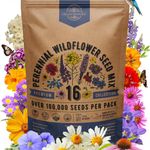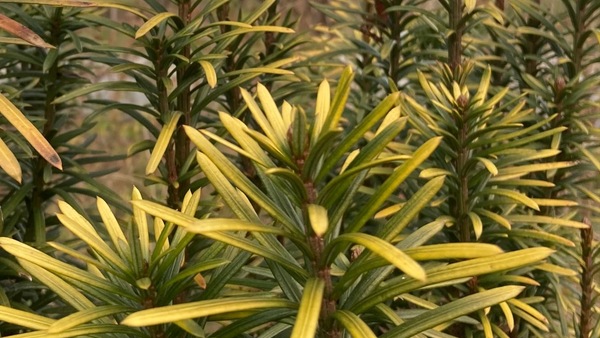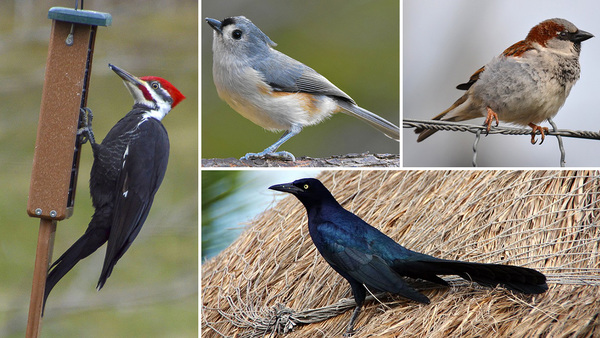
Without a doubt one of the best parts about gardening in the Southeast is winters that are temperate yet still bring seasonality to the garden. I’m grateful that we don’t often get bone-chilling cold that lasts for days and weeks on end. Many gardeners in colder climates spend their winters waiting for spring. As gardeners in the Southeast, we can plan for vibrant gardens with winter interest in mind. For our purposes, we will define “winter” as December through February. For this article I will take you on a journey through the plants that are looking good in my winter garden in eastern Tennessee during these few months. I’ve made a note of the date I took the photo of each plant to give you a feeling of how the season progresses throughout my garden in the Southeast.
See more articles on this topic:

Curve-leaf yucca
Name: Yucca gloriosa var. tristis syn. Yucca recurvifolia syn. Yucca gloriosa var. recurvifolia
Zones: 7-11
Size: 4 to 6 feet tall and wide
Conditions: Full sun; well-drained soil
Photo Taken: December 25
Yuccas of all kinds bring structure to the winter garden. To me, curve-leaf yucca is one of the most graceful. It loves to be planted in full sun with good drainage. However, I don’t find it overly fussy. This plant can be long-lived and hard to remove, so make sure you place it exactly where you want it.

Delavay’s schefflera
Name: Schefflera delavayi
Zones: 7-11
Size: 10 to 15 feet tall and 5 to 8 feet wide
Conditions: Partial shade; well-drained soil
Photo Taken: January 10
I get more excited about this plant every year. Delavay’s schefflera has large, broad, attractive leaves that are evergreen. In winter, seeds mature and cascade over the foliage. It seems to like being planted in afternoon shade.

‘HGC Josef Lemper’ hellebore
Name: Helleborus niger ‘HGC Josef Lemper’
Zones: 3–8
Size: 1 foot tall and 1 to 2 feet wide
Conditions: Partial shade; moist, well-drained soil
Photo Taken: January 16
Hellebores are an exciting group of plants for North American gardeners. They can be grown almost anywhere. What makes this species, Hellborus niger, and particularly this cultivar, ‘HGC Josef Lemper’ so special is how early and how long it blooms. Blooming as early as December, it puts on a show that lasts for several weeks. Flowers fade from clear white to chartreuse green.

Eastern sowbread
Name: Cyclamen coum
Zones: 5-8
Size: 3 to 6 inches tall and wide
Conditions: Partial shade; well-drained soil
Photo Taken: January 31
Gardeners in the Southeast can go down a long road of obsession for cyclamen, but not every species is well-suited for this region. My cyclamen-loving friends tell me ivy-leaved cyclamen (Cyclamen hederifolium, Zones 4-8) is the easiest to grow, but that one is a fall bloomer. If you want a winter gem, Eastern sowbread is at the top of my list. Plant tubers under deciduous trees. This plant is attractive in foliage and flower.

Reticulated iris
Name: Iris reticulata
Zones: 5-9
Size: 3 to 4 inches tall and wide
Conditions: Full sun to partial shade; well-drained soil
Photo Taken: February 9
Surprise! That’s how reticulated iris greets gardeners on a winter ramble. Plant it en masse on the edge of beds and enjoy its early blooms. This plant is perhaps not as long-lived as other fall-planted bulbs, so plant a few more every year. It pairs well with snowdrops (Galanthus spp. and cvs., Zones 3-9) for an early-season show.

Blue atlas cedar
Name: Cedrus atlantica ‘Glauca’
Zones: 6-9
Size: 40 to 60 feet tall and 30 to 40 feet wide
Conditions: Full sun; well-drained soil
Photo Taken: February 14
Conifers in general are the kings and queens of the winter garden. Conifers with blue foliage seem to impress even more in colder months. Blue atlas cedar is one of my favorites for its standout texture and color. In the Southeast, make sure you don’t plant this or other conifers too deeply to ensure good drainage. For my picks on other stand-out cedars for the Southeast, click here.

‘Jelena’ witch hazel
Name: Hamamelis x intermedia ‘Jelena’
Zones: 5-8
Size: 15 to 20 feet tall and 10 to 15 feet wide
Conditions: Full sun; well-drained soil
Photo Taken: February 15
‘Jelena’ witch hazel is a top shrub for those looking to add more winter interest to their gardens. It performs well in the understory or in more sun with adequate moisture. This cultivar does a good job of shedding its leaves in the fall so flowers are even more noticeable during their winter bloom.

Japanese cornel dogwood
Name: Cornus officinalis
Zones: 5-8
Size: 15 to 25 feet tall and wide
Conditions: Full sun to partial shade; medium moisture, well-drained soil
Photo Taken: February 17
If you love dogwoods, you need to add this little-known beauty to your list. Exfoliating bark shines in the winter sun and its extraordinarily early blooms are delightful. These flowers will yield to bright red berries late in the season. This plant is virtually disease and pest free.

Parney cotoneaster
Name: Cotoneaster lacteus syn. Cotoneaster coriaceus syn. Cotoneaster parneyi
Zones: 6-9
Size: 6 to 8 feet tall and 6 to 12 feet wide
Conditions: Full sun to partial shade; well-drained soil
Photo Taken: February 17
If there is a cotoneaster that has more fruit per square inch than this one, I don’t know it! Parney cotoneaster is a loose, open shrub with beautiful foliage and arching stems during the season. In fall, long-lasting fruit develops and persists for an extended period. This Asian species has been known to escape the confines of cultivation in California, but I have not seen this same issue in the Southeast. It would make an outstanding loose hedge that will give you flowers in the spring and a fruit display in fall and winter.

Double Play® Candy Corn® Japanese spirea
Name: Spiraea japonica ‘NCSX1’
Zones: 4-8
Size: 1 to 1½ feet tall and 1½ to 2½ feet wide
Conditions: Full sun to partial shade; moist, well-drained soil
Photo Taken: February 18
This is a smaller spirea that has one of its best moments in late winter. Frost tolerant new foliage emerges bright red when there is still plenty of cold in the air. Later in the season, the foliage transitions to hues of gold and orange. The pink flowers are sterile, which alleviates concerns about invasiveness and gives the plant itself even more energy to put on fabulous displays of foliage.
Try any one of these plants to add winter interest to your garden. Better yet, plant them all to keep the show rolling through December, January, and February.
For even more on winter interest in the Southeast, check out:
And for more Southeast regional reports, click here.
Andy Pulte is a faculty member in the plant sciences department at the University of Tennessee.
Photos: Andy Pulte
Fine Gardening Recommended Products

Organo Republic 16 Perennial Wildflower Seeds Mix for Indoor & Outdoors
Fine Gardening receives a commission for items purchased through links on this site, including Amazon Associates and other affiliate advertising programs.

Ho-Mi Digger - Korean Triangle Blade
Fine Gardening receives a commission for items purchased through links on this site, including Amazon Associates and other affiliate advertising programs.



















Comments
Log in or create an account to post a comment.
Sign up Log in